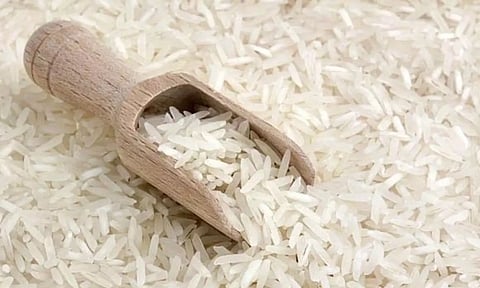

NEW DELHI: Last month, the Union government halted the export of Basmati rice valued at under $1,200 per metric tonne (MT) to restrict the potential of illegal shipment of plain white rice by wrongly classifying it as Basmati rice.
The Union Commerce Ministry had directed the Agricultural and Processed Food Products Exports Development Authority (APEDA) that contracts for Basmati exports valued at $1,200 per MT and above should be registered for issue of registration cum allocation certificate (RCAC).
The Ministry noted that there was a large variation in the contract price of Basmati rice being exported with the lowest contract price being $359 per MT, considering that the average export price was $1,214 per MT.
APEDA has been asked to consult with traders to sensitise them on this issue and discourage them from using this window to export non-Basmati white rice. In July, the export of non-Basmati white rice was also prohibited on account of rise in domestic prices, and to ensure food security in the country.
It might be recalled it was exactly a year ago that the Centre had prohibited the export of broken rice, subject to the permission granted by the government to other nations to meet their food security needs, as requested by the administrations of those countries.
Apart from this, the government has also levied a 20% export duty on par-boiled rice till October 15. The implications of these developments are quite substantial, when you place it in the context of India’s contribution to the global food basket.
For starters, India is the largest rice exporter globally with a 45% share in the world rice market. Rice exports in April-May 2023 were 21.1% higher compared to the corresponding period in the last financial year.
In May this year, export of Basmati rice spiked 10.86% compared to exports in May 2022. The shipment of non-Basmati variants also rose 7.5% in spite of the export duty on white rice and the prohibition on export of broken rice.
However, a glance into production estimates might help place the restrictions in perspective. Per the third Advanced Estimate of the Department of Agriculture and Farmers Welfare, rice production dipped by 13.8% at 158.95 lakh tonnes during the Rabi season of 2022-23 compared to 184.71 lakh tonnes produced during the Rabi season of 2021-22.
This is despite the fact that rice was sown on 384.05 lakh hectares this year, as opposed to 367.83 lakh hectares last year during the same period. It’s a scenario that finds resonance in international rice hotspots, such as Thailand, which anticipates 25% lower production in 2023-24. Iraq and Iran are also facing concerns pertaining to their rice yields, while Myanmar has altogether stopped its raw rice exports.
According to experts in the agri-space, the restrictions on rice exports, coupled with the 40% export duty on onions, could end up capping the income of farmers in the country, at a time when international demand seems to be in their favour.
Stakeholders believe the government must consider classifying rice as common rice and specialty rice for the purpose of export policy decisions, instead of relying on the Basmati and non-Basmati classifications.
There are around 12 rice varieties that have a Geographic Indication (GI) tag and these variants could be exceptions to interventions in the general market.
Analysts have also suggested that the Centre collates agri-products designated for export restrictions at export parity prices. This would imply a price that farmers would have bagged had they been permitted to honour their export contracts. Offloading these stocks into the market could help keep their prices controlled.